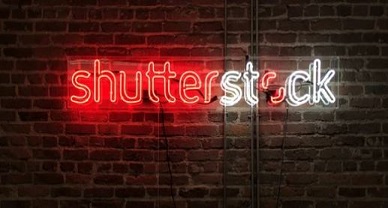Shutterstock: What License Allows Third – Party Transfer?
Introduction
Shutterstock is a global provider of licensed images, videos, audio and editing tools, that has revolutionized the way visual content can be accessed and used. Founded in 2003 by photographer, programmer and entrepreneur Jon Oringer, the American company had been a pioneer in its field which is now a leading platform, headquartered in New York and spanning across 150 countries[1], that serves as a two-sided content marketplace to bridge the gap between content creators and end-users. Content creators contribute their work to the platform, making it available for licensing, while end users can easily browse, license and utilize them. This streamlined process allows for a smooth exchange of creative resources that benefits both creative professionals and those seeking high-quality visuals, ensuring that content creators can monetize their talent while enabling seekers to access a vast archive of visual assets to enhance their creative projects.
[Image Sources : Shutterstock]
The reason behind Shutterstock’s success and popularity is reasonably its vast archive which encompasses a staggering number and variety of content – with over 432 million royalty-free stock photos, vector graphics and illustrations as well as 10 million video and music clips[2], Shutterstock offers an unparalleled collection of creative resources. Furthermore, Shutterstock provides royalty-free licensing where once a user purchases a license for an asset, they do not need to pay any further royalties for its usage forever and everywhere.
LICENSING OPTIONS AT SHUTTERSTOCK[3]
To cater to the unique requirements of different projects and users, Shutterstock offers a variety of licenses to accommodate different usage scenarios and creative requirements:
- Standard License[4]: The Standard License is ideal for non-commercial applications such as web and app advertising, e-publications like e-books and blogs, email marketing, social media, including YouTube and Dailymotion, small films with budgets under $10,000 and printing under 500,000 total copies. However, it does not permit resale, distribution or any form of commercial use; templates, merchandise and decoration in small commercial spaces are also prohibited. The Standard License provides legal indemnification of up to $10,000, offering users a degree of protection.
- Enhanced License: Building upon the perks of the Standard License, the Enhanced License grants its users additional freedoms and more flexibility. It removes the restrictions on budget and print reproductions, enabling web distribution, copy printing and packaging, and out-of-home advertising impressions. Enhanced License holders can also utilize assets in templates, merchandise and decoration in small commercial spaces. With an increased legal indemnification of up to $250,000, the Enhanced License is particularly suitable for retail applications, providing users with further security, rights and usage options.
- Editorial License: The Editorial License addresses newsworthy purposes, allowing the single, perpetual use of content within a specific context. For instance, an image may be used in a blog, and if that image is uploaded elsewhere, it is permitted as long as the proper reference thereof is provided. This license is useful for news articles, non-fiction books and documentaries. However, it imposes restrictions on the usage of assets in print covers, broadcast TV or OTT (Over-the-Top) platforms, advertisements, merchandise, product packaging or any commercial or promotional use. Similar to the Standard License, it offers printing up to 50,000 total copies and ensures proper attribution while preventing other users from licensing the same content. Content marked as “editorial use only” is not cleared for commercial use, ensuring compliance with legal and ethical standards, particularly in cases involving celebrities, people without consent, and trademarks, logos and service marks.
- Premier License[5]: The Premier License represents Shutterstock’s most premium and custom-made offering, catering to the specific needs of enterprises. It grants access to Shutterstock’s Enterprise Platform, which unlocks a comprehensive set of features and benefits. This license grants sensitive use rights, unlimited indemnification, and third-party rights transferability. Not only does it provide for the use of assets in merchandise and templates but also high-resolution unwatermarked comps that allow users to assess the suitability of assets before finalizing their selection. With unlimited seat access, batch downloading and subaccounts with managed permissions, teams can collaborate seamlessly, enhancing workflow efficiency. The Premier License also gives increased legal protection and API access, allowing direct integration with enterprise applications to streamline the creative process. Region and language-specific account managers offer personalized support, ensuring a tailored experience for each enterprise. Additionally, the Premier License facilitates the sharing of assets across the organization, empowering teams to leverage Shutterstock’s vast library effectively.
ARE LICENSES TRANSFERRABLE?[6]
When it comes to using Shutterstock content for client projects, it is essential to understand the intricacies of licensing and content ownership. Shutterstock offers different types of licenses, each with its own set of permissions and limitations. While the Standard and Enhanced Licenses do not allow for the transfer of content rights, the Premier License provides the option to transfer ownership.
Sometimes, a client may specifically request content for their exclusive use in a project. In such cases, both you as the licensee and the client must purchase separate licenses. While you may have purchased a license for the project, it cannot be transferred to the client. Instead, the client must obtain an additional license independently from Shutterstock to acquire the necessary rights for the content’s use.
Additionally, Team subscriptions are available for up to 10 users and can be conveniently purchased online. For larger teams and organizations requiring more extensive access, Shutterstock offers Team Solutions, providing customized solutions to ensure seamless collaboration and efficient asset management, to meet the needs of a greater number of users.
CONCLUSION:
Shutterstock has emerged as a leading global platform, empowering creativity and providing a vast content marketplace for professionals in various industries. With its impressive collection of licensed visual content, combined with its flexible licensing options and innovative enterprise solutions, it has established itself as a go-to resource for creative professionals worldwide. By connecting content creators with businesses and individuals seeking high-quality visual assets, Shutterstock empowers creativity and drives innovation across a diverse range of industries. Whether it is a small business, a media agency or a large enterprise, Shutterstock is a trusted resource for creative opportunities.
Author: Neha Raj, in case of any queries please contact/write back to us at support@ipandlegalfilings.com or IP & Legal Filing.



